This Substack was inspired by an article I’m sure many of you have read, as it’s been quite popular, detailing the recent research on impressionist art during the Industrial Revolution and how it might be more “realistic” than previously thought: it’s likely the impressionist vibes were actually just accurate depictions of the air pollution and smog surrounding London at the time. But it made me think about different examples of art in response to pollution in our current society and lives and thought this would be an interesting theme to pull together.
In case you haven’t read the article in question that inspired this, I highly recommend you checking it out!
New Study Finds That Hazy Skies In Impressionist Paintings May Have Depicted Air Pollution
A recent study found that famous Impressionist painters such as Claude Monet and Joseph Mallord William Turner may have based their later paintings on their air-polluted environments — providing an alternative explanation for Impressionism’s signature hazy, dream-like glow.
The study, conducted by scientists at Harvard University, Sorbonne University, and École Normale Supérieure, found that Impressionist paintings by artists like Monet and Turner closely followed 19th-century pollution trends.
Prior to the study, art historians described Impressionism as an art style of perception rather than reality. “Impressionists wanted to paint not simply what they saw but the way they saw it,” the National Gallery of Art wrote.
As it turns out, maybe there was less of “the way they saw it” as originally thought. It’s interesting to look at, especially this painting by Monet in that context. The red, dimmed sun, the burned sky. It feels extremely reminiscent to the skies here on the West Coast during fire smoke season (man, do I hate that this is a “season” now).
I wonder if it was these apocalypse skies that got researchers curious about the accuracy of the impressionistic paintings. One of the things I found most interesting in the article is how in their letters written to friends and family, the artists frequently remark on the “fog” of London and how much they love it, with Monet even writing to his wife in 1900:
“I am working very hard, although this morning I really thought the weather had changed completely; when I got up I was terrified to see that there was no fog, not even a wisp of mist: I was prostrate, and could just see all my paintings done for, but gradually the fires were lit and the smoke and haze came back.”
I wonder if the artists could feel the air quality change as we can when we breathe in. I know I am exceptionally grateful for N95s and carbon filter mask inserts when the fire smokes close in.
Waterway Pollution in Taiwan Visualized Through Popsicles
This has been another project that’s stuck with me over the years as being both a hideous and memorable visualization of pollution, in a way that, to me, is almost art. The project was conducted by three art students, I-chen, Yi-hui and Yu-ti.

Each popsicle was made from a collected water sample from lakes, beaches, rivers, streams, and other water sites across Taiwan, both in tourist areas and remote locations. The water was frozen and then encased in a plastic resin for preservation of the “popsicle”.
By imitating the aesthetic of recent artisanal food trends, the Polluted Water Popsicles serve to highlight how beauty doesn’t always correspond with optimum human or environmental health.
They even designed (honestly pretty epic) wrappers for each sample.

It’s pretty gross, but also pretty amazing and interesting and I think about it all the time. I wonder what the waterways around me look like.
Promotion of Plastic in 1950s Advertising
As dystopian as this seems now, this image was published in a 1955 article in Life magazine to emphasize the benefits of disposable plastic.

Plastic Pollution Art: From the Ocean, and from the Stomachs of Seabirds
Mandy Barker’s art from plastic pollution she finds along the shore or in the stomach of Albatross chicks is beautifully grotesque.
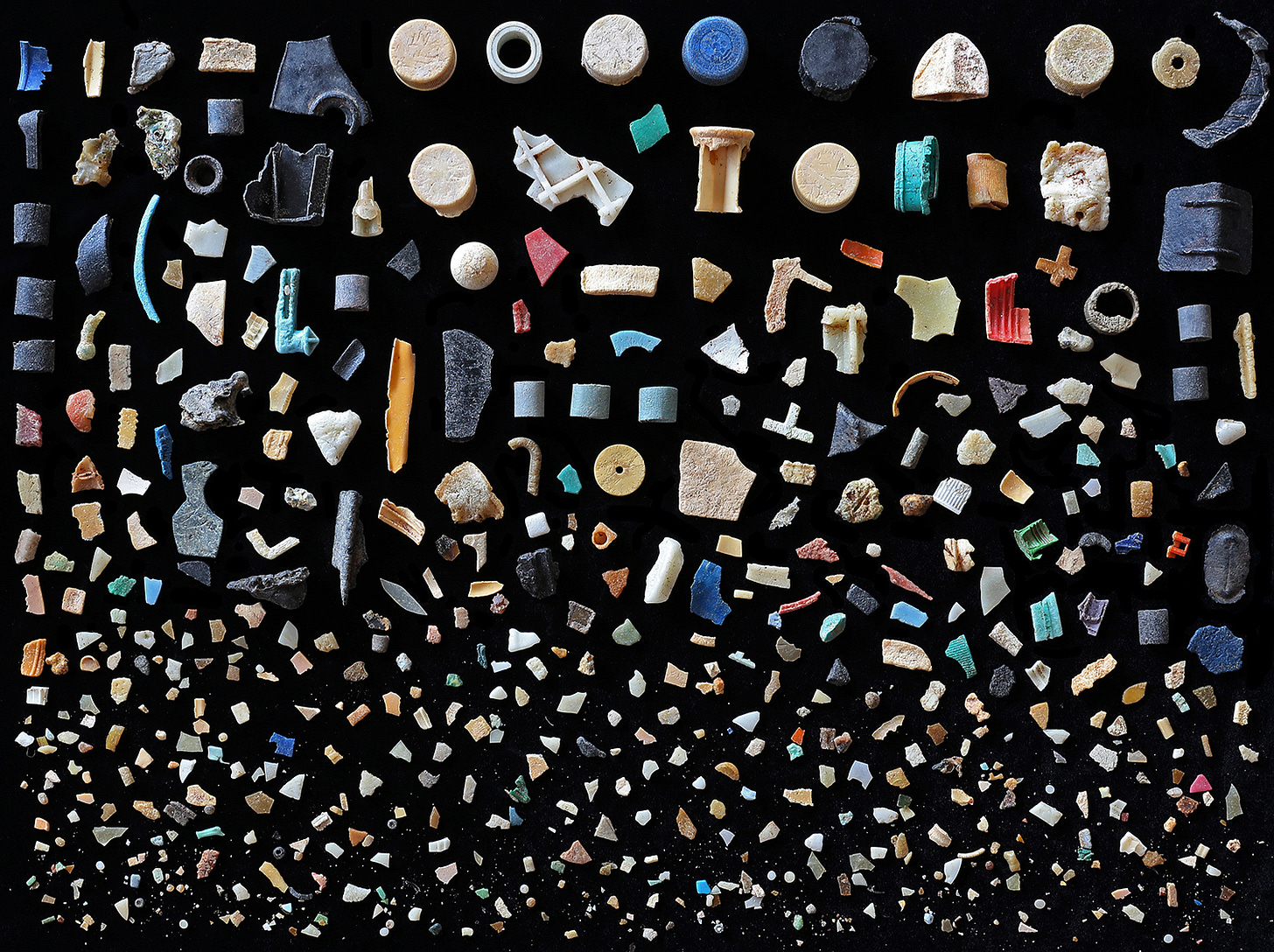
The poor Albatross chicks can’t tell the difference between plastic and food and eventually end up engorging their stomach on plastic pieces they can’t process and pass away. *I’d seen these artworks before, but every time I find it very upsetting to see :’(
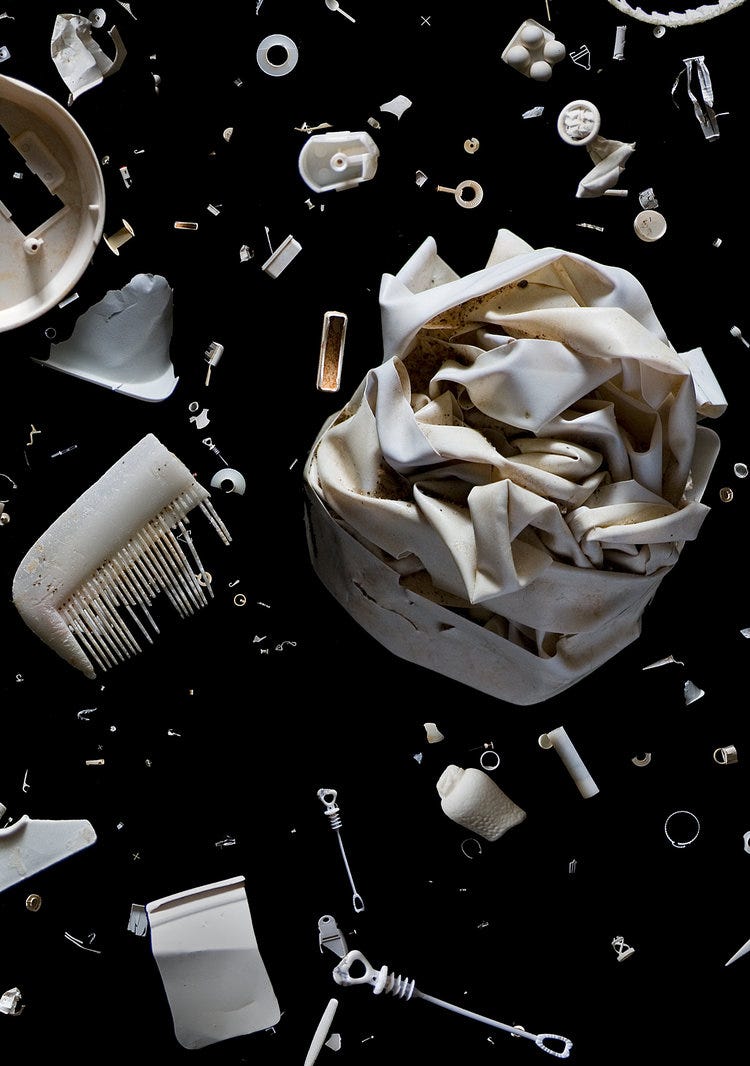
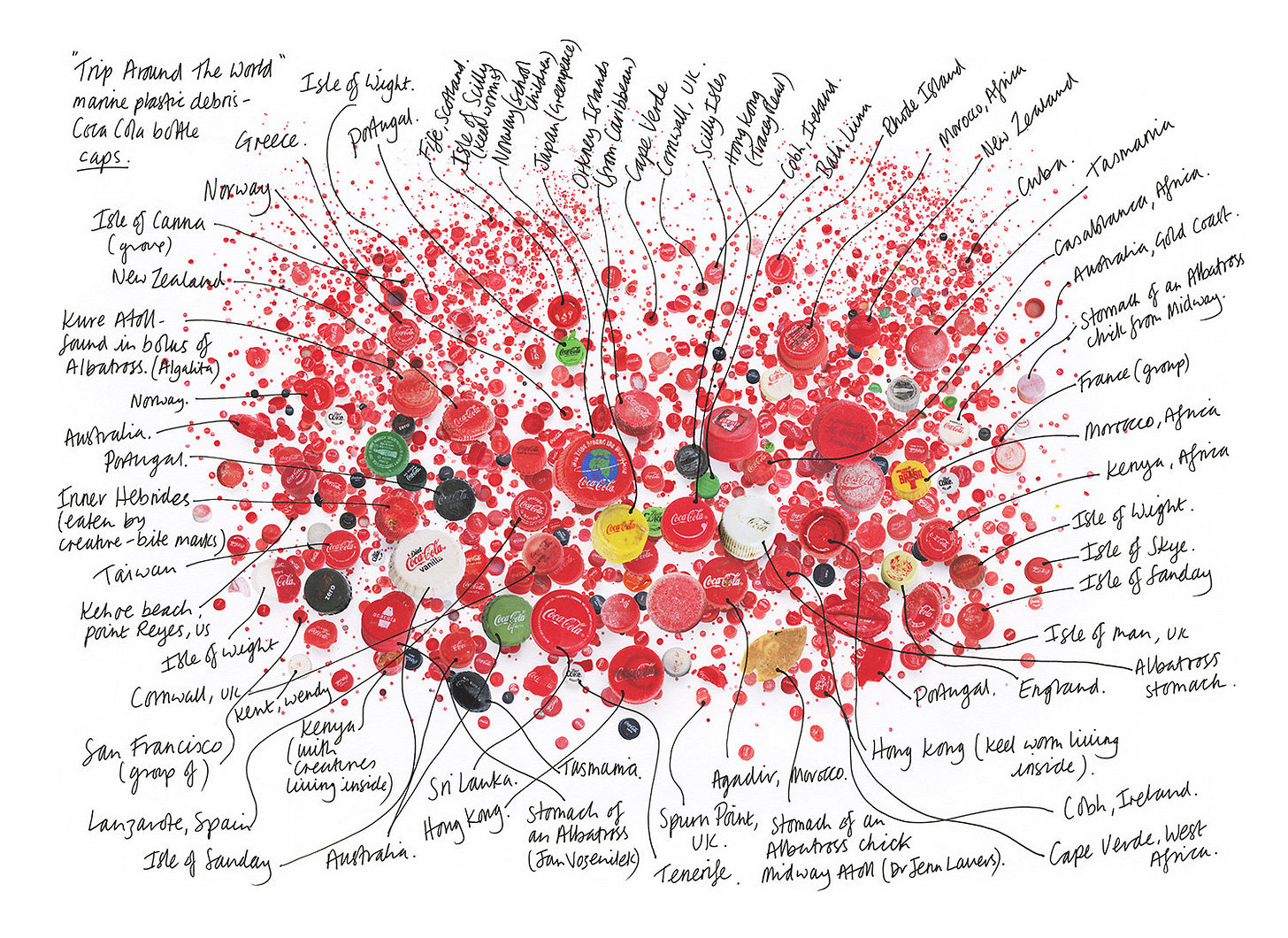
To connect to the substack a few issues ago about recycled plastic, this collage by Barker speaks to the common experience we all share across the globe: finding pollution in the ocean from Coca-Cola.
Contemporary Dinosaurs: ‘Toxic Life’ Exhibit Explores Evolution and Extinction
Set up like dinosaur exhibits, Catalan artist Alvaro Soler Arpa’s “Toxic Life” exhibit displays grotesque (yet enthralling) creations of animal bones mixed with plastics, netting, and futuristically-disfigured re-imaginings of skeletons of animals distorted and mutated over the decades by pollution.
With a total of fourteen sculptures created with bones and plastic waste, Mr. Arpa emphasizes the human impact of runaway plastic pollution on ecosystems and individual animals. Approximately eight million tons of plastic are dumped in the ocean each year, making marine plastic pollution a major issue that impacts animals across the food chain, from whales to zooplankton.

In my opinion, these works are visceral: you can feel the tension and the imagined pain from the entanglements, despite them being entirely original compositions.
“The work has a creative origin but has always existed in concern for the environment,” noted Soler in the press conference presentation of his work, until now virtually unknown. “I dedicated myself for years to find bones in the mountains, in restaurants and butcher shops…I even dug up a horse. The aim of these creations is not to sell, but to convey a message.”
It’s creepy, but it looks cool. Some analysis of the exhibit seem to read it as “hopeful” in the sense that these creatures have “evolved” alongside the plastic, but I can’t really pick up on that read: to me it seems just a mutated extinction event. But really very creative and engaging. The way the exhibit was displayed was also very reminscent to natural history museums, instead of a “art gallery” style approach to exhibition design.
If you thought this was cool, consider giving it a share to a friend!
Thanks for reading Green Graphic Design! Subscribe for free to receive new posts and support my work.





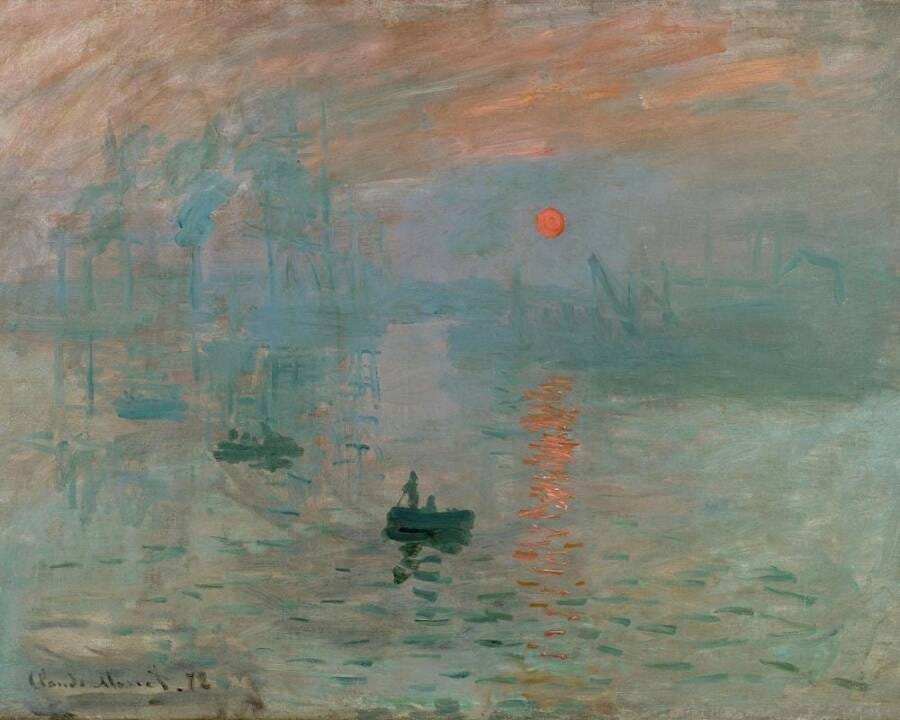

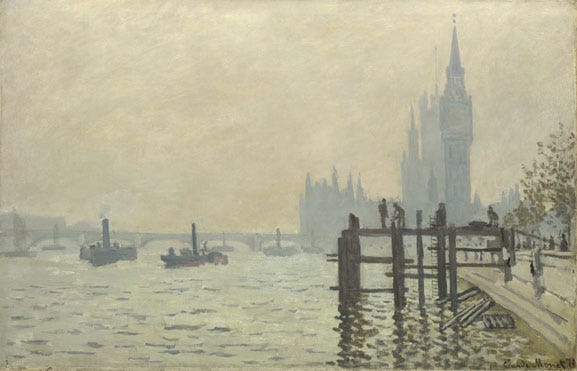


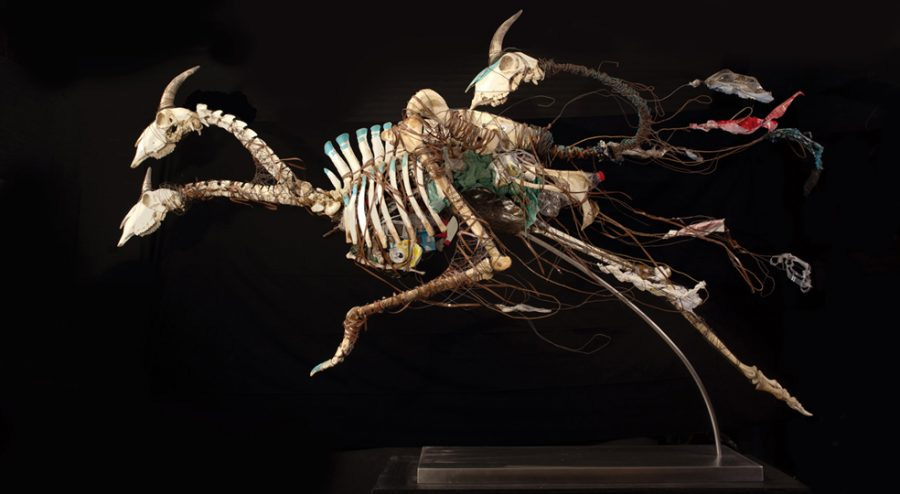
Wow, love the popsicle thing! It really reinforces how disgusting pollution actually is.